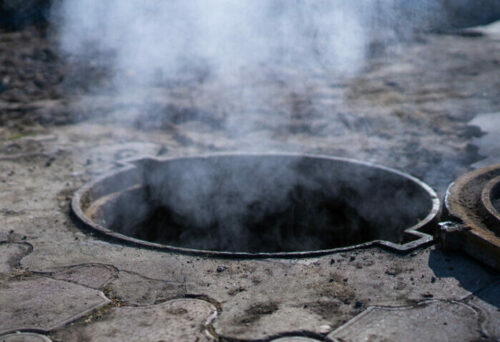A City Worker’s Guide to Sewer Smoke Testing
Smoke testing has a variety of applications that make it useful to city workers. As one of the most efficient and cost-effective methods for locating the source(s) of infiltration and inflow (i&i) within sewers, it is used fairly often when sewage issues are suspected.
Most cities employ a 2-3-man crew to use high-capacity blowers and force smoke down into city manholes. Under the pressure from the blower, the smoke travels through the sewer system and escapes through cracks, connections, defects, and other places along the way. And as a city worker, the tools you use to get the job done can make all the difference in whether or not you find the source of the problem.
Necessary Equipment for Municipal Smoke Testing

Having the right smoke testing equipment makes all the difference when it comes to municipal smoke testing. Especially when you are potentially inconveniencing residents in the process, it’s imperative to get the testing right the first time.
Below are some of the most important products to use for sewer smoke testing:
- High-Power Blowers – Most engineering specifications for smoke testing blowers suggest using one that is able to provide a minimum of 1750 cu ft of air per minute. With innovations in the market, it’s not hard to find smoke blowers that can deliver more than 3000 cu ft of air per minute. While that might be more power than you need for most jobs, choosing a higher-powered blower will eliminate the need for additional smoke bombs or garden sprayers to extend the testing time.
- Smoke Agents – There are two common types of smoke used during sewer smoke testing, fluid smokes and smoke candles. Fluid smoke is more common as it is newer technology and is typically the more efficient option for city workers. Thermal aerosol smoke agents feature a spill-proof liquid cartridge that provides constant pressure for less oil waste, more voluminous smoke, and greater production.
- Manhole Kit – When looking specifically at testing city utility holes, you can benefit from using a liquid smoke generator designed to uniquely fit over manhole covers. This can help to quickly identify leaks, illicit connections, odors and more in public sewer lines.
Residential Procedures for Sewer Smoke Testing
When performing municipal smoke testing in your city, it’s important to be as transparent as possible with the residents. Provide all residents with a pre-work notification a week before work starts. In areas where smoke testing will happen, residents should get a 24–48-hour notification.
